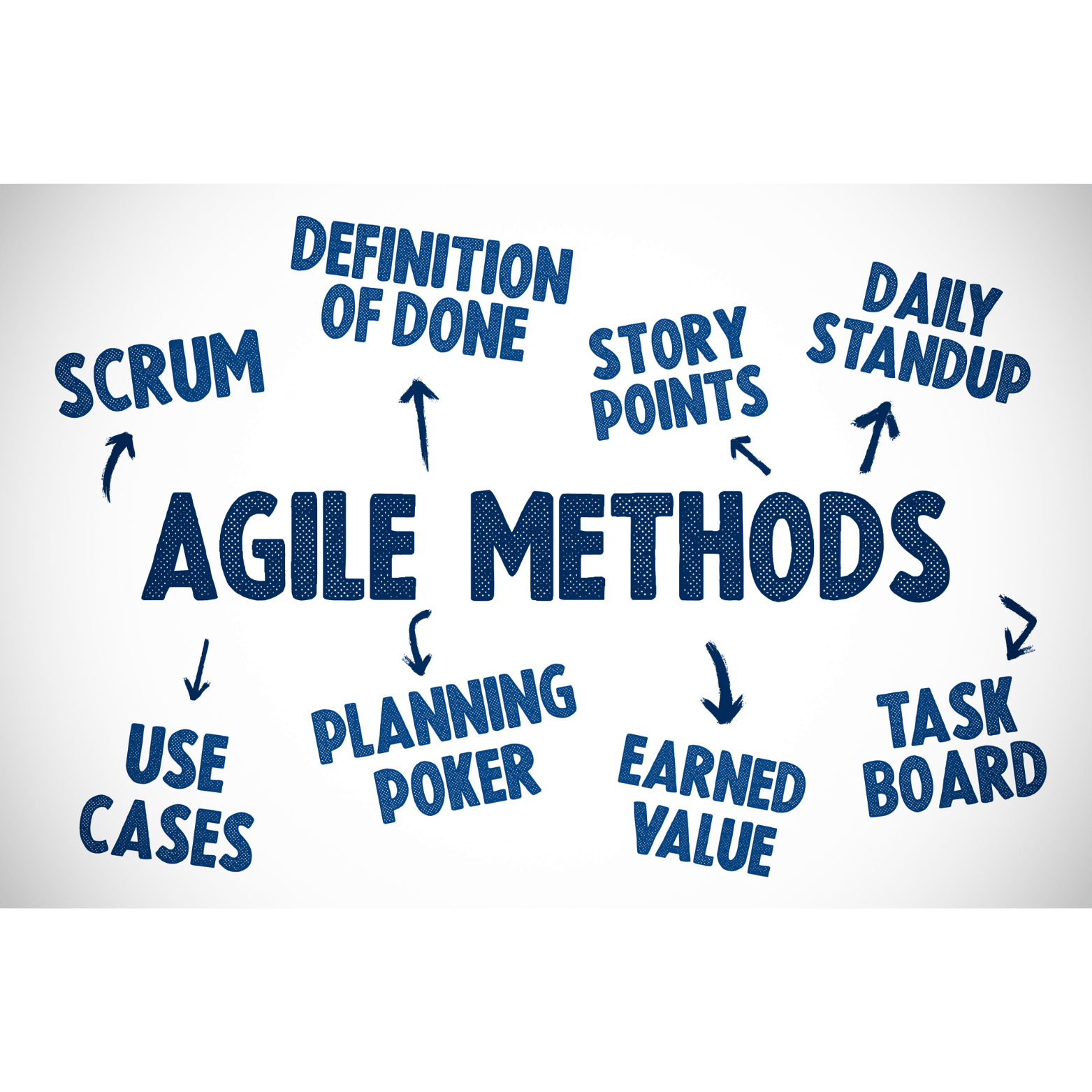Dans un monde où les besoins évoluent à vitesse grand V, la gestion de projet traditionnelle, rigide et linéaire peine à suivre, délaissant dans la foulée la satisfaction des clients. Au sein de notre équipe Rebel Company, nous avons choisi la méthode Agile, méthode humaniste et flexible centrée sur le client, s’imposant comme une solution incontournable pour les projets digitaux.
But what makes this method unique? Why are we convinced it perfectly meets your expectations?
Read this article to understand our vision.
Pourquoi la méthode Agile révolutionne-t-elle la gestion de projet digitale ?
Agility is not just a simple method: it’s a philosophy that revolutionizes digital project management. Unlike traditional models focused on rigid planning from the outset, the Agile methodology prioritizes an iterative and incremental process with short cycles, known as Sprints, to ensure quick adaptation to each client's needs.
What does this mean? In practical terms, we move forward in short steps, called Sprints. These cycles allow us to integrate your feedback at each stage, optimize processes, and adjust the project based on your current needs. With each cycle, we deliver an improved version of your product, ready to be tested and enhanced.
The goal? To adapt the product to your evolving needs, while working closely with you to deliver concrete and targeted results quickly. Complex projects are broken down into small, actionable steps, allowing us to course-correct when necessary.
Quels sont les 4 valeurs fondamentales de la méthode Agile ?
Adopting Agility in managing multiple projects also means adopting principles that place human relationships and collaboration at the heart of every step. Within the Rebel team, we follow the four core values of the Agile Manifesto:
- Human interactions over rigid processes. A successful project relies on smooth communication between our teams and you, as your needs are at the heart of every step. To ensure this proximity, we assign a dedicated liaison person (called "Product Owner") throughout the process. This key role allows for a consistent and personalized understanding of your needs.
- A functional product over comprehensive documentation. The goal? To quickly put high-value results in your hands.
- Collaboration with the client over contractual negotiations. "You are an integral part of the iterative process. Your feedback enriches the project at every stage and brings you closer to ultimate satisfaction."
- Adapting to change over strictly following a plan. Change is not an obstacle: it’s an opportunity to refine and improve each proposal, without compromising the project.
These values shape the way we work. They are the foundation on which we build flexible projects, focused on your needs.
To learn more about the Agile Manifesto, check out the official guide at asana.com/fr/resources
What are the benefits of the Agile methodology at Rebel Company?
- Continuous collaboration. We firmly believe that your involvement is an integral part of your success. Through regular exchanges, we ensure that your vision guides the project. This collaboration is not limited to a few meetings at the start and end of the process: it is a daily part of our work.
- Frequent deliveries and measurable results. Thanks to short cycles and regular deliveries at each Sprint, you closely monitor the project's progress and receive a high-performance product within a controlled timeframe, thus avoiding any unpleasant surprises.
- An exceptional ability to adapt. An unexpected event? A new idea? Rather than questioning everything, we prefer to adapt and positively embrace any modification request, even late ones, to align the product with your current needs and expectations.
- Optimized resource management. The short cycles inherent to the Agile method allow us to prioritize the most important tasks. For example, a recent optimization helped a client reduce costs by 15% while delivering a final product within a 3-week shorter timeframe. At the end of each Sprint, we review progress together.
Also discover here notre page dédiée à notre méthode Agile, mettant en scène les différentes étapes d’un processus d’accompagnement.
What are the key stages of an Agile project? (From the backlog to the delivery)
To make everything clear, here are the key stages that structure our approach:
- Initial planning. We start by defining your needs through a "User Story", then create a clear vision for the project and attempt to organize this around what we call a "product backlog" : a list of priority features to develop.
- Short Cycles: Sprints. Each cycle typically lasts between two and four weeks. During this time, our teams focus on specific tasks, then test, and finally deliver a functional product.
- Daily Meetings. The daily stand-ups are short and dynamic meetings. They allow us to share progress, identify opportunities for improvement, and stay aligned with the overall objectives set at the beginning of the cycle.
- Review and Retrospective. At the end of each Sprint, we present the product, collect your feedback, and then identify areas for improvement for the next cycle. These exchange moments enhance the quality of the final product.
What are the key roles in an Agile project? (Product Owner, Scrum Master, and the Development Team)
Three essential roles ensure the smoothness and effectiveness of our projects:
- The Product Owner. As the true spokesperson for your needs, the Product Owner, a key player in the Agile philosophy, prioritizes essential features and ensures the co-construction of the project throughout the development process. For example, they may request the addition of a mobile feature to address a new need.
- The Scrum Master. As the guardian of best practices, the Scrum Master facilitates collaboration among the entire team and ensures it continuously adapts to potential changes and feedback received.
- The Development Team. Together, our experts bring your ideas to life, creating a high-performance, tailored product, but also a project that you love and are proud of.
L’importance d’une approche humaine dans la méthode Agile
The ultimate goal of our approach is to break away from the traditional client-business relationship. We firmly believe in human values and are committed to highlighting them throughout every process and collaboration. By co-creating a project that reflects you and provides significant added value, the Rebel Company team ensures the final product meets—or even exceeds—your expectations.
But beyond the result, it’s the experience that matters. By adopting an agile and flexible project management philosophy, we make you an active participant in your project and its success.
Ultimately, what’s more rewarding than seeing your ideas come to life and perfectly meet your needs and expectations?
Rebel Company - Your Partner for Successful Digital Projects
Do you have an innovative idea? Do you dream of a project that fully reflects your ambitions?
Contact us today for a free consultation, and let’s discover together how our agile approach and teams can make all the difference
Frequently Asked Questions
Tout savoir sur la méthode Agile et sa mise en œuvre
La méthode Agile est une méthode de gestion de projet basée sur des cycles courts et itératifs, appelés Sprints. Elle permet de livrer des résultats progressifs tout en s’adaptant aux besoins changeants des clients grâce à une collaboration continue.
La méthode Agile offre plusieurs bénéfices :
- Flexibility to integrate changes during the project.
- Rapid delivery thanks to short cycles.
- Close collaboration between teams and clients.
- Continuous improvement through regular feedback.
A Sprint is a work period of 2 to 4 weeks where a team focuses on specific tasks from the backlog. At the end of the Sprint, a deliverable is presented to the client, who can provide feedback to adjust the next steps.
An Agile project relies on three key roles:
- Product Owner : prioritizes features based on client needs.
- Scrum Master : ensures adherence to Agile practices and facilitates collaboration.
- Development Team : performs tasks and delivers results at the end of each Sprint.
Contrairement aux méthodes traditionnelles, comme la gestion en cascade, la méthode Agile privilégie la flexibilité, les cycles courts, et les retours fréquents des clients. Elle évite les plans rigides et permet des ajustements constants pour maximiser la satisfaction.
La méthode Agile est particulièrement adaptée aux projets complexes ou évolutifs, comme le développement de sites web, les applications digitales, ou tout projet nécessitant une grande adaptabilité.
Chez Rebel Company, nous mettons en œuvre la méthode Agile pour offrir des solutions personnalisées, flexibles et centrées sur vos besoins. Grâce à notre expertise et notre collaboration étroite avec les clients, nous livrons des projets qui dépassent vos attentes.
The duration depends on the project's complexity and the number of Sprints required. Each Sprint typically lasts between 2 and 4 weeks, but initial planning and review phases may vary the total duration.
Agile teams often use tools like:
- Trello or Jira for managing the backlog.
- Slack for internal communication.
- Miro for visual collaboration.
Progress is tracked through daily stand-up meetings, regular demonstrations at the end of each Sprint, and tools like Kanban boards or burndown charts.



